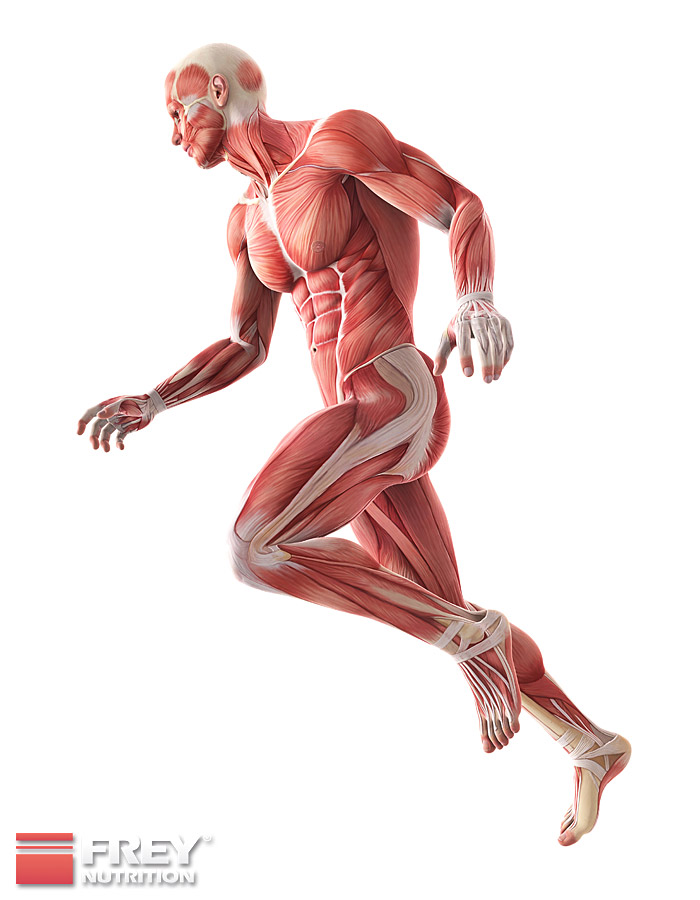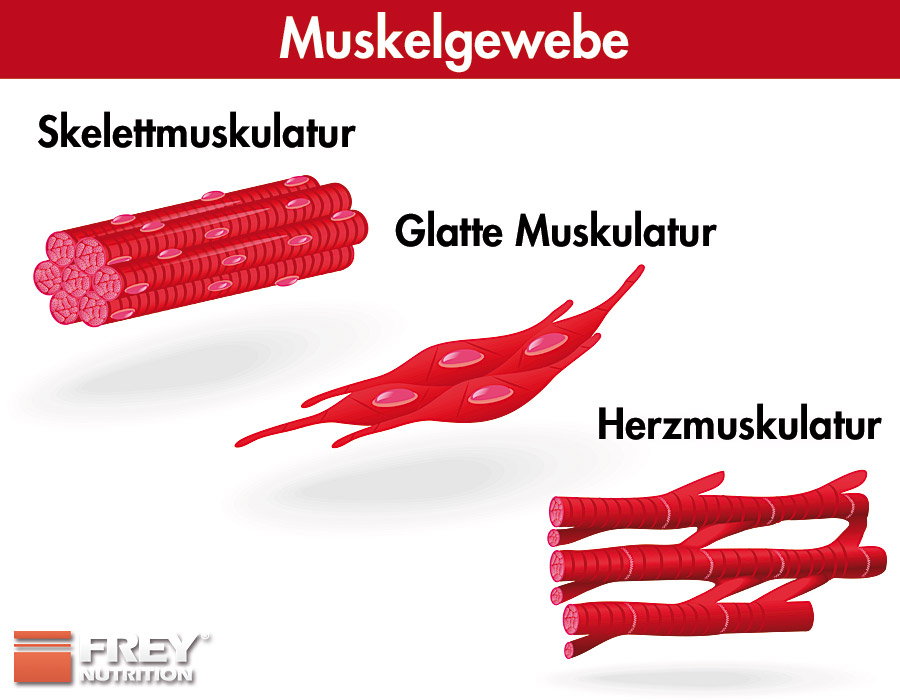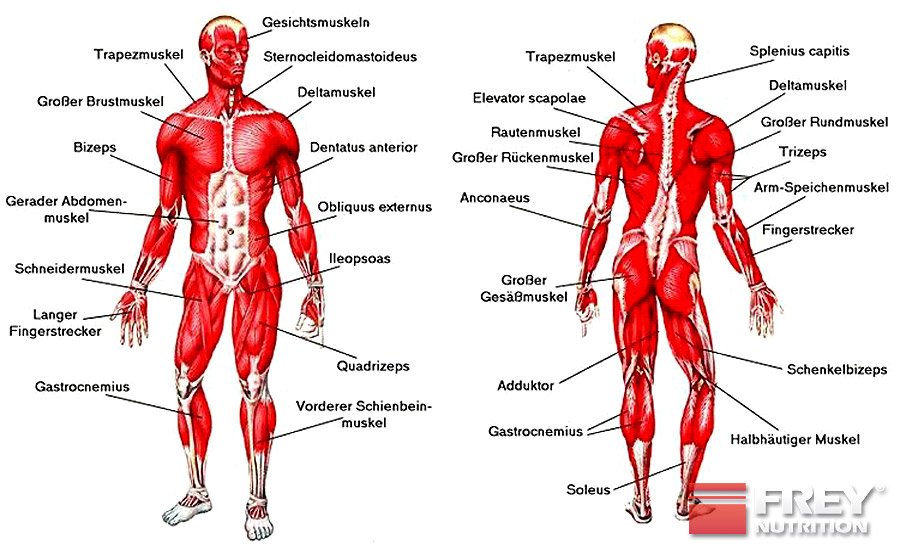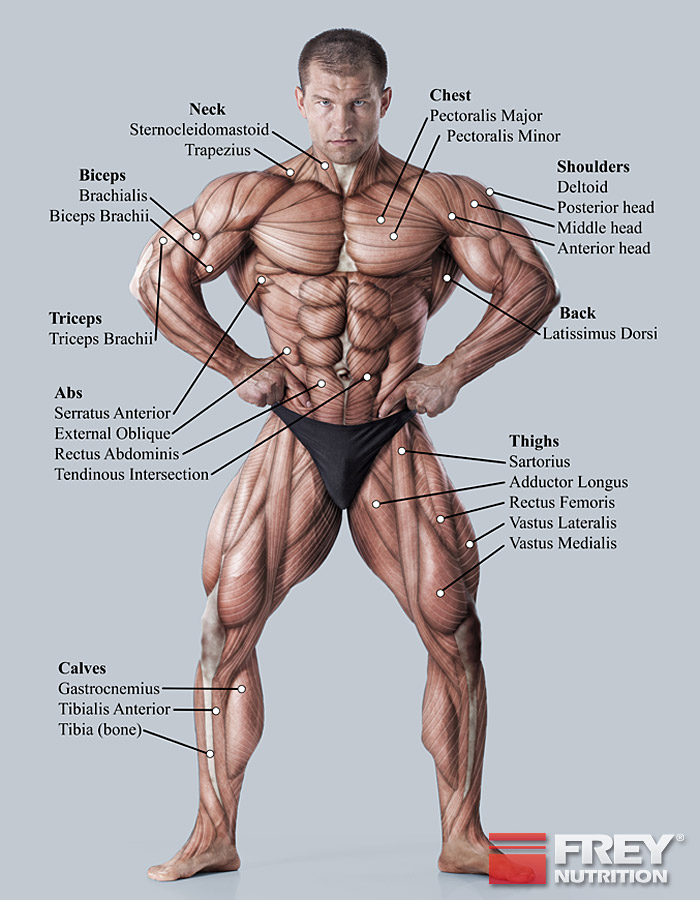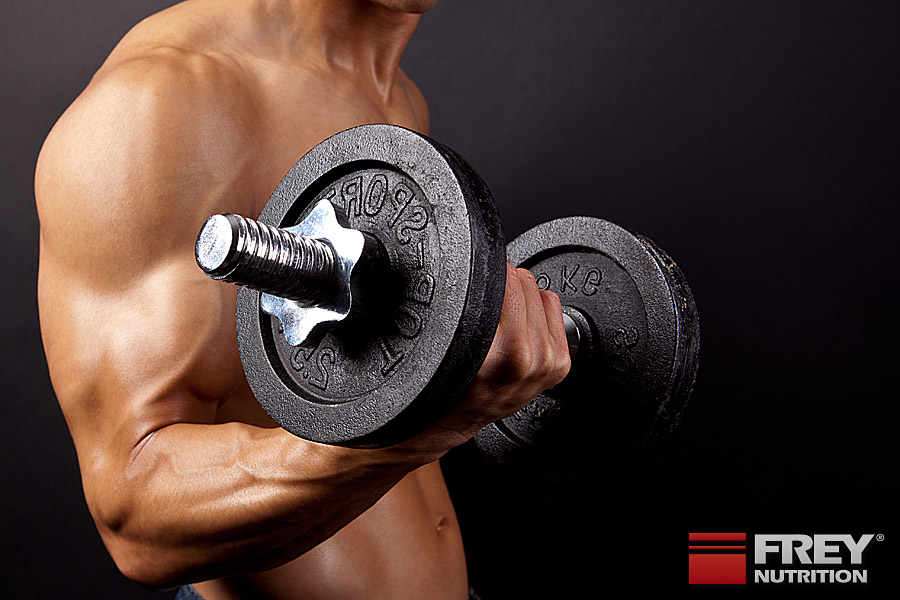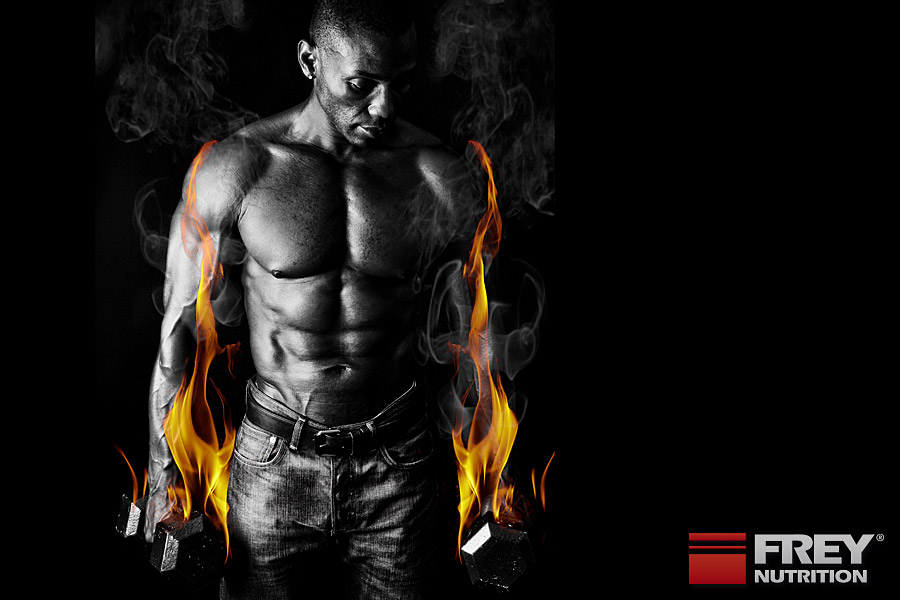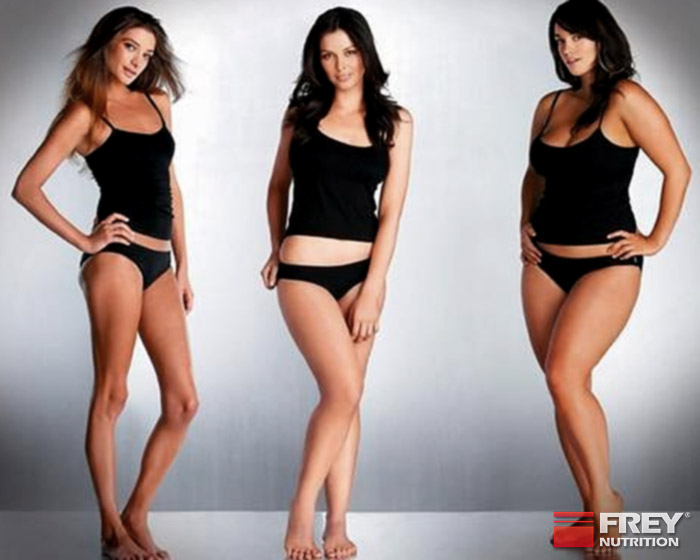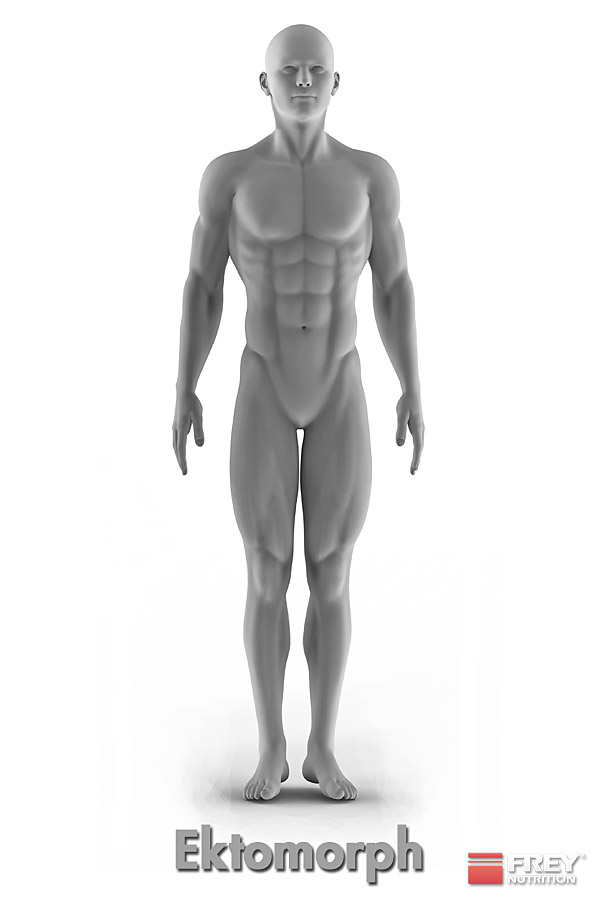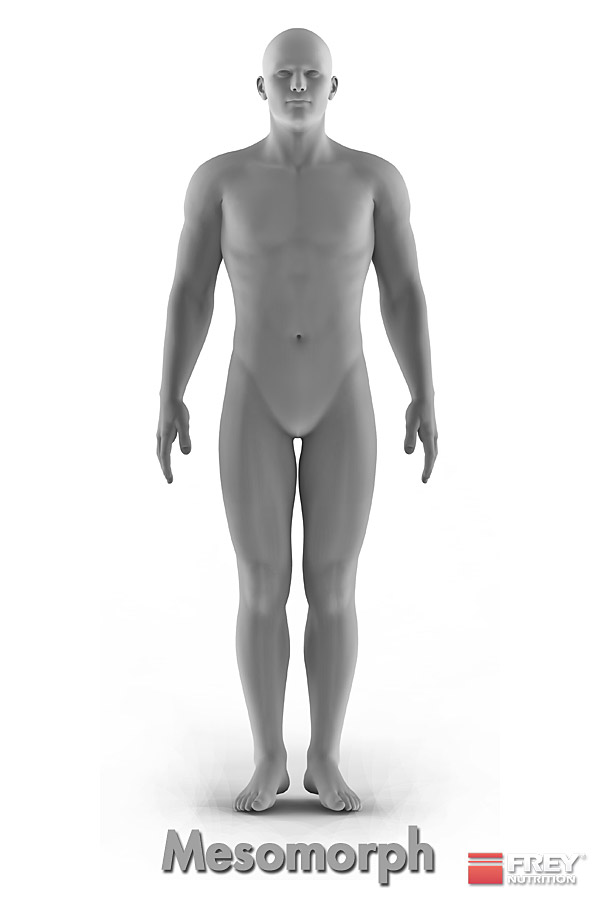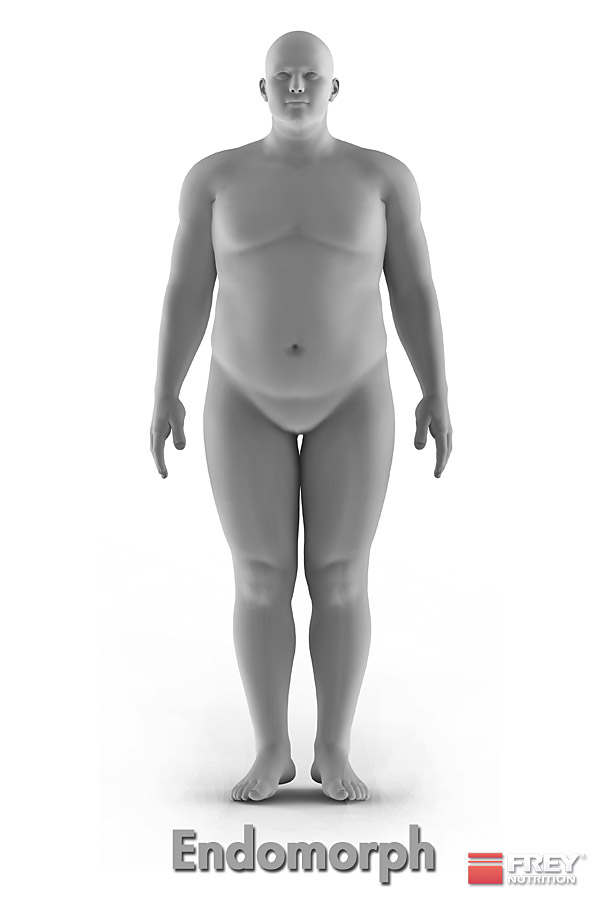THE DIFFERENT TYPES OF MUSCLES
Humans have around 600 muscles, of which around 400 are skeletal muscles. For an average man, around 40% of the total body mass is made up of muscles, although this proportion is much higher in trained athletes. Due to lower testosterone and higher estrogen levels, women naturally have less muscle, at around 35%. The muscles themselves consist of over 70% water and just under 30% protein. Due to the high water content of the muscles, sufficient fluid intake is necessary, especially to maintain muscle performance. Unfortunately, very few people pay attention to this important aspect, as on average they drink far too little.
There are three different types of muscles that differ in structure, function and properties:
THE MUSCLE TYPES
- STRIPED SKELETAL MUSCULATURE
- CARDIAC MUSCLE
- SMOOTH VISCOSE MUSCULATURE
Only the skeletal muscles are under your own control and can be stimulated to grow through appropriate training. Muscles such as the heart muscle, vascular muscles or esophageal muscles cannot be controlled voluntarily. Muscle activity is controlled by the motor nervous system. Depending on the requirement, more or fewer muscle fibers are stimulated. In order to protect the muscles from excessive strain, almost all muscle fibers never work together, but always only a part of them.
This protective function is necessary so that the muscles do not tire too quickly, for example when standing. If the fibers in use tire, others take over, as there is always a natural reserve of muscle fibers available. During muscular exertion, almost all of the energy is burned exclusively by the muscles being used, which generates heat. The primary energy sources used for this are carbohydrates, then fats and, in exceptional cases and when there is a deficit in the first two, proteins.
The muscle consists of individual fiber bundles, which in turn are made up of individual fibers. These consist of the proteins myosin and actin, which can slide into each other via cross-connections. This sliding into each other is what causes a muscle to contract. Nerve endings open into the fibrils of the individual muscle fibers, which trigger a contraction via signals from the brain in the form of electrical stimuli. The ends of the muscle are connected to the bone via tendons.
FROM MUSCLE STIMULATION TO MUSCLE BUILDING
Nerve impulses cause the muscle cells to contract their tendons, which leads to an overall contraction of the muscle. Depending on the intensity and duration of the stimulus, more or fewer muscle cells are involved in a contraction. The muscle obtains the energy required for the contraction from the splitting of ATP (adenosine triphosphate); ATP is then converted into ADP (adenosine diphosphate). However, the body needs a certain amount of time, i.e. breaks between sets, in order to be able to partially replace this splitting for further training. For this reason, equally long and sufficient breaks between sets are very important in order to give the muscles used during training enough time to regenerate.
This fact is reflected in the TRAINING BASICS as a first principle. A rest of 1 to 2 minutes between sets is an optimal guideline. Creatine can shorten the recovery process between sets and thereby contribute to more intense training sessions, which leads to greater muscle gains in the long term.
Performance and willingness to perform can be significantly improved through targeted training. The muscle adapts (adaptation = Latin: adjustment), ie it adjusts to the given circumstances. The muscle thus gets used to the initial strain and it becomes easier the more it is repeated. However, this requires sufficient recovery, during which the muscle can regenerate and become more efficient. As the movement sequence is practiced with repeated training, the coordination of the muscle also improves. The muscle becomes more resilient, the muscle fibers hypertrophy (Latin: increase in the cross-section of the muscle) and can use more power.
The system described is the basis of supercompensation, which is taken into account in the FIT, see FREY INTENSITY TRAINING . Regular strength training increases the number of capillaries (smallest blood vessels) in the muscle, which improves blood circulation. This effect can be significantly increased by intensive aerobic training (see: AEROBIC TRAINING AND FAT LOSS ).
MORE ACTIVE MUSCLE MASS = INCREASED METABOLISM = INCREASED AND FASTER BODY FAT LOSS
The so-called "pump" is the technical term for an increased blood flow to the muscles, which in turn is necessary for a sufficient supply of nutrients to the muscle cells with proteins, amino acids and glycogen. The improved intra- and intermuscular coordination of the muscle results in an economization of the energy supply in the muscle. The number of mitochondria (= power plants of the cells) increases, the metabolism adapts, works more economically and uses more body fat as energy. This metabolic adaptation not only applies during training, but also at rest during recovery, which increases the basal metabolic rate. This effect of mitochondrial proliferation can in turn be potentiated by aerobic training.
In summary, more muscle leads to an increased basal metabolic rate. The body needs more energy to maintain body temperature and burns more calories during physical activity and at rest. As a result, the likelihood of storing calories consumed in excess of daily requirements as fat decreases and decreases with every gram of muscle mass.
All in all, these are ideal conditions for reducing body fat. With more muscle mass, excess fat deposits can be burned better, more effectively and more quickly during diet phases, as more metabolically active mass is available and thus more energy is used in the form of fat.
"THE FEAR OFTEN EXISTING AMONG WOMEN OF GAINING "MOUNTAINS OF MUSCLE" THROUGH STRENGTH TRAINING IS NOT ONLY UNFOUNDED, BUT COUNTERPRODUCTIVE FOR FAT LOSS." (QUOTE: A. FREY)
The described biological adaptation of the positive metabolic adjustment applies not only to the male sex, but also to the female sex, which puts strength training in a completely different light and makes it extremely useful, especially for women who want to reduce body fat.
That's why women are well advised to prefer weight training to cardio training. The often false fear that the former will lead to building "enormous mountains of muscle" is not only unfounded and a widespread misconception, but is also counterproductive for fat loss. The muscle building process progresses very slowly and is much more difficult for women than for men due to their higher levels of female hormones such as estrogen and lower levels of male hormones. Before noticeable and, above all, visible muscle building can occur, the increased metabolism causes additional fat loss and, assuming a diet-specific diet, has a positive effect on the scales through weight loss. If you want to activate your metabolism, strength training should come before endurance training!
THE MUSCLE FIBER TYPES
The muscles of the human body are made up of two different types of muscle fibers. The fiber distribution is genetically predetermined and can only be changed slightly through training.
TYPE-1: SLOW-CONTRACTING MUSCLE FIBERS (RED FIBERS)
- predominantly aerobic metabolism
- increased number of mitochondria
- more myoglobin (hence darker color)
- lower phosphate storage
The slow-twitch muscle fibers are primarily suitable for long aerobic sessions and have a narrower structure. They produce less power, but are more enduring and therefore available for a longer period of time. People with predominantly slow-twitch muscle fibers are more suitable for endurance sports, such as marathon running. Building muscle mass is very gradual and is a lengthy process.
TYPE-2: FAST-CONTRACTING MUSCLE FIBERS (WHITE FIBERS
- predominantly anaerobic metabolism (better glycolysis)
- fewer mitochondria
- less myoglobin (hence lighter color)
- higher phosphate storage
The fast-twitch muscle fibers are longer, thicker and are primarily active during anaerobic work. They can develop more power in a shorter time, but they tire much more quickly than the red fibers due to their lower endurance performance. Athletes who have a particularly high number of type 2 fibers are better suited to strength sports than to endurance sports. Type 2 muscle fibers play the biggest role in bodybuilding, as they are primarily responsible for the development of above-average muscle mass.
Although the white muscle fibers are the decisive factor for success in bodybuilding due to their greater increase in thickness, the red muscle fibers should not be neglected. The latter are not only important for aerobic exercise, but also play a role in the development of fat-free muscle mass due to their role in metabolic activity.
The increased number of mitochondria in red muscle fibers leads to a more effective burning of fats and a lower body fat percentage. Only the simultaneous use of both fiber types produces an overall increase in performance, which is achieved, among other things, by FIT is implemented.
THE BODY TYPES
The genetic predisposition determines the individual body type, which cannot be changed. The genetics (= genotype) are determined from birth, are not subject to training stimuli and cannot be changed. However, the individual appearance (= phenotype) can be changed by environmental influences such as training, nutrition and discipline.
In the 1930s, William Sheldon introduced three different body types that are still used scientifically and medically today. Humans are divided into three body types: ectomorph, mesomorph and endomorph. However, it is hardly possible to clearly classify the body types, as they are almost always a mixed form.
For example, an ectomorph athlete may have elements of the mesomorph type, or the mesomorph may have elements of the endomorph body type, etc. The body type classification is interesting and important for classifying one's own metabolism. "Am I more of a slim type and do I gain weight slowly, or is my body type more robust and weight gain is not a problem for me?" The answer to this question not only provides information about one's own metabolism, but also provides tips for a targeted diet. The body type classification applies to both men and women.
ECTOMORPH (SLIM TYPE)
CHARACTERISTICS
- narrow shoulders
- slender hips
- narrow chest
- poor regeneration
- poor muscle development
- little fat accumulation
An ectomorph is generally very thin, his body is narrow and not very muscular. Gaining weight and building muscle is difficult. However, his advantage is that he hardly puts on any fat, even if he eats too much and poor quality food (e.g. junk food, etc.). Ectomorph people have a very hard time in bodybuilding, as muscle growth is slow and sluggish, and it "evaporates" if he neglects a high-calorie diet for the slightest bit. The diet should be high in carbohydrates, with a moderate amount of protein and fat. Ectomorph people can easily follow a diet and quickly achieve a defined shape in just a few weeks. This is why these athletes are particularly predestined for the fitness category or for athletics. With an iron will and enough perseverance, success in bodybuilding is also quite realistic.
MESOMORPHIC (ATHLETIC TYPE)
CHARACTERISTICS
- broad shoulders
- narrow hips
- large chest
- optimal regeneration capacity
- optimal muscle building
- moderate fat accumulation
The mesomorph type has a moderate metabolism and has optimal prerequisites for bodybuilding. Mesomorph people have an average fat percentage and can easily gain weight or lose fat if necessary. The diet should be balanced, with a high protein percentage and a moderate carbohydrate and fat intake. Its optimal metabolism pays off especially in competitions, where there is a frequent change between building and dieting phases. Since they are genetically advantaged, athletes with an athletic physique have it easiest in competitive sports.
ENDOMORPHIC (STRONG TYPE)
CHARACTERISTICS
- broad shoulders
- wide hips
- large chest
- good regeneration
- good muscle building
- a lot of fat accumulation
Endomorphic people have an easy time gaining weight and muscle, but they also put on fat very quickly. They react very strongly to carbohydrates, which is reflected in strong fluctuations in blood sugar. The diet should therefore be low in carbohydrates and high in fat and protein. Carbohydrates should be consumed primarily in their complex form and their intake should be limited in the evening to prevent the build-up of body fat. Due to their slow metabolism, endomorphic types should, in addition to strength training, carry out regular aerobic sessions, which counteract their genetically determined fat storage.



